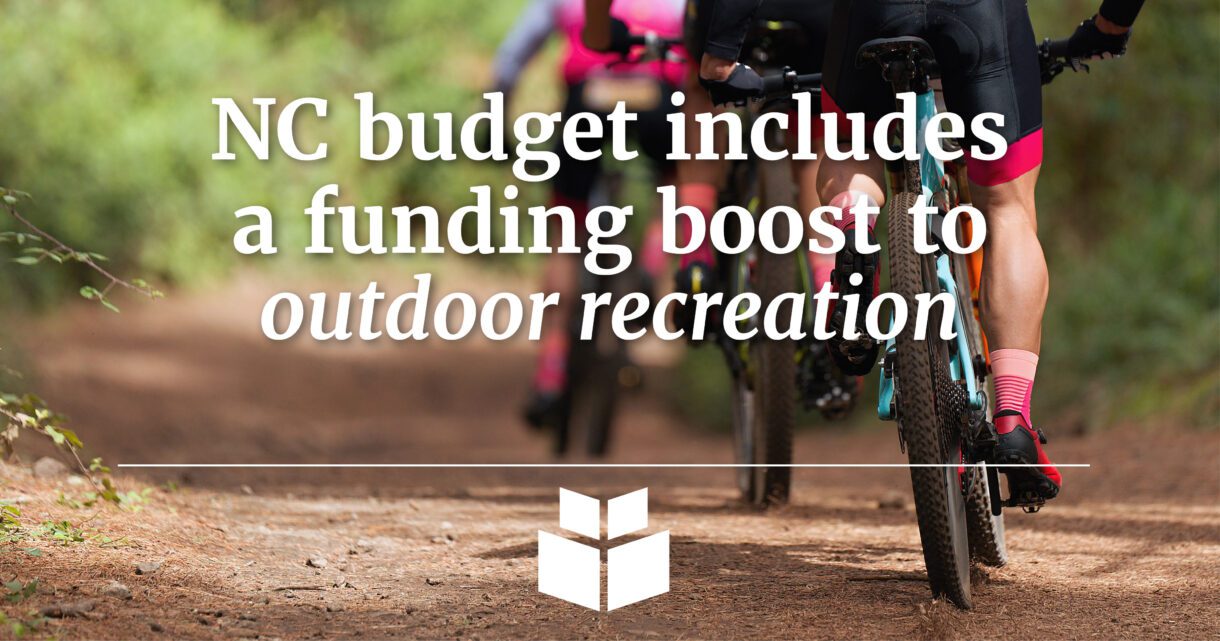
When the North Carolina General Assembly passed its 2023–2025 budget in September, it included an unprecedented allocation of funds to boost outdoor recreation across the state.
The budget includes a plan to invest $54.9 million to spur trail and greenway infrastructure.
According to the Great Trail State Coalition’s website, the “investment is the largest amount designated for trail land greenway projects in the state’s history.”
The website provides some highlights:
- A new, non-recurring $25 million trail and greenway funding program called the Great Trails State Program was created.
- It adds $5 million to the Complete the Trails Fund supporting authorized North Carolina State Trails; these are trails that cross county lines.
Jon Blasco, Senior Project Manager, Design+Planning, said “this is great news for the citizens of North Carolina. Spending time outside and in nature is important to our well-being.”
For Jon, the added benefit is that strengthening outdoor recreation amenities “helps attract new residents and businesses to our area.”
“It’s great that the Legislature is recognizing the benefits and importance of these types of amenities by providing this level of funding. We look forward to working with our municipal partners across the state to help them implement new outdoor amenities in their communities,” Jon said.
WithersRavenel Funding and Asset Management Senior Technical Consultant Alice Briggs said the new budget allocation of funds through the Great Trails State Coalition provides needed funding for local communities and aims to work with them to develop implementation recommendations for the newly created $25 million fund.
“The Great Trails State Fund is intended to accelerate trail development across North Carolina,” she said. “’Muscle-powered’ trails of all types are eligible for planning, feasibility study, design, construction, maintenance, and repair activities. The program implementation is still being developed, but communities and nonprofits will be eligible to apply. There are $12.5 million available in 2024, and grants will be limited to $500,000.”
Staying competitive
Alice said that projects that are well conceived, community supported, and can be completed by the end of 2025 will be most competitive.
She also said that although “there is still far greater demand than programs and funds available,” WithersRavenel’s team has extensive experience in parks and recreation funding, and they have worked with clients to help find various sources to pay for trails and greenway projects. Though this is not a comprehensive list, these are the most common funding options for trail projects:
- Parks and Recreation Trust Fund (PARTF) – Covers trail development with dollar-for-dollar matching funds up to $500,000
- Carolina Thread Trail –Limited to planning or construction dollars for trail development in its network
- NCDOT Congestion Mitigation & Air Quality (CMAQ) Program – While the program typically focuses on roadway project, funds have also been awarded to trail projects
- Limited Recreational Trails Program – Provides grants of up to $150,000 for planning or construction
- Department of Commerce’s Rural Transformation Grant Program – Broad-based support for to improve economic vitality in rural areas; this program is currently out of funds and no further allocations were made in the current budget
While funding is a vital part of a parks and recreation project, WithersRavenel’s has Design+Planning team members dedicated to the planning and design of parks, trails, greenways, and recreation facilities, working collaboratively with in-house engineers, environmental scientists, and funding and asset management specialists.
Learn how we can help you get started on your next outdoors project through a discussion about funding, planning, and design. For funding questions, reach out to Alice Briggs at abriggs@withersravenel.com, and for trails design and planning, Jon Blasco at jblasco@withersravenel.com.
